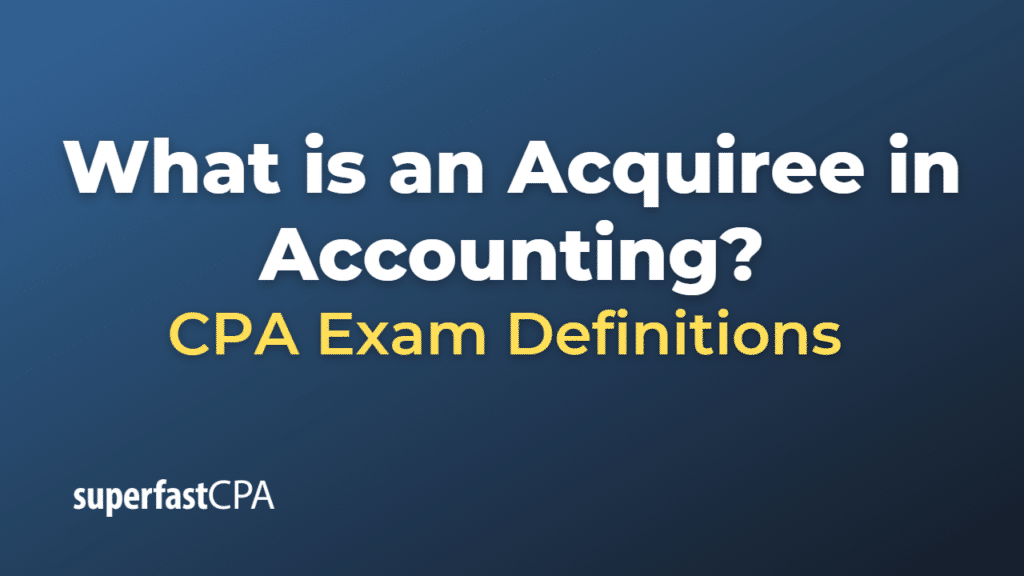Acquiree
In accounting, an acquiree refers to a company that is being acquired or bought by another company, known as the acquirer. The acquisition process typically involves the acquirer obtaining a controlling interest in the acquiree, which often results in a change of ownership, management, or control of the acquiree’s assets and operations. The acquiree can be a public or private company and can be acquired through various methods, such as mergers, asset purchases, or stock purchases.
In financial reporting, the acquiree’s financial statements are often consolidated with the acquirer’s financial statements after the acquisition is completed. The accounting treatment of the acquisition depends on the specific terms and conditions of the deal, and it generally follows the acquisition method of accounting under the generally accepted accounting principles (GAAP) or International Financial Reporting Standards (IFRS).
Example of an Acquiree
Let’s consider a hypothetical example to illustrate the concept of an acquiree in accounting.
Company A (the acquirer) decides to acquire Company B (the acquiree). Company A purchases 100% of Company B’s shares for $50 million.
In this example, Company B is the acquiree because it is being bought by Company A. The acquisition process might involve negotiations, due diligence, and various legal and regulatory approvals. Once the acquisition is completed, Company B becomes a part of Company A, and its financial statements will be consolidated with those of Company A.
The acquisition accounting treatment will involve several steps, such as:
- Identifying the assets and liabilities of Company B.
- Measuring the fair value of the assets and liabilities acquired.
- Allocating the purchase price to the acquired assets and liabilities based on their fair values.
- Recognizing goodwill or gain from a bargain purchase, if applicable.
For instance, suppose Company B has the following assets and liabilities:
- Tangible assets: $30 million
- Intangible assets: $10 million
- Liabilities: $20 million
The fair value of net assets acquired is calculated as follows:
$30 million (tangible assets) + $10 million (intangible assets) – $20 million (liabilities) = $20 million
As Company A paid $50 million for Company B, the excess of the purchase price over the fair value of net assets acquired is $30 million ($50 million – $20 million). This excess will be recognized as goodwill in Company A’s consolidated financial statements.













